
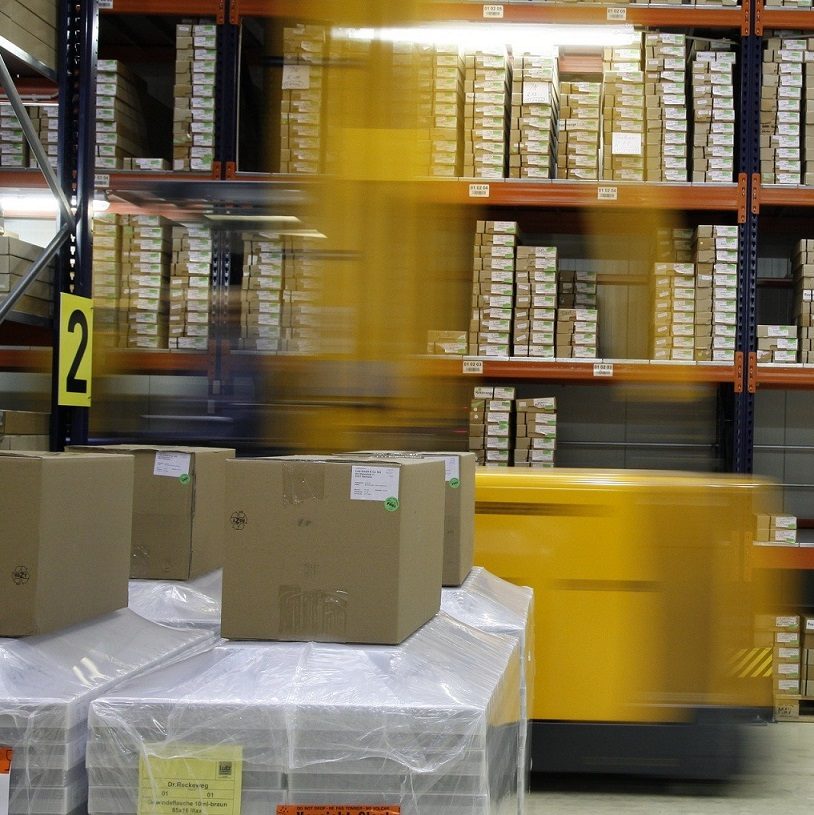
Four Pieces of Material Handling Equipment Every Small Warehouse Needs
How to boost safety and productivity: Find the right material handling equipment for small warehouses
Busy season is upon us. As a small warehouse operator, you may be preparing for the holiday demand peak, last-minute orders, and the inevitable returns. And if your warehouse is not part of the holiday shopping ecosystem, you are likely tackling the impact of the unprecedented supply chain issues.
Either way, your choice of equipment matters to warehouse performance. By deploying the right material handling equipment for small warehouses, you can increase productivity and enable your warehouse team to safely navigate narrow aisles and big lifts.
Small warehouses often do not require the same fleets seen in many distribution centers or main production plants. Operations in small-scale and large-scale warehouses differ greatly although their purposes may be identical. From volume to space management to personnel, smaller warehouses demand their own set of equipment to boost productivity and facilitate ease of use.
In this post, we’ll highlight a few key pieces of material handling equipment for small warehouses that significantly enhance the overall efficiency.
4 key pieces of material handling equipment for small warehouses
Stackers
When floor space is limited, the only way to go is up. Small warehouses make up for their footprint by going vertical. In other words, they require the ability to stack. Cue the walkie stacker. Ideal to move shipments for short distances indoors, this warehouse workhorse lets the operator walk behind the equipment.
Although it shares many design features with a pallet jack or truck, the walkie stacker is motorized. And, in comparison to forklift trucks, it’s a considerably more budget-friendly option. The lift capacity runs between 3,000 to 5,000 pounds and lets you lift pallets to the second shelf of a warehouse stacking system.
To consider
One of the most popular models is the S22 Electric Stacker — and you will see why. This model is easy to use and maintain, and fits right into environments where space is limited. With the capacity to lift 2,200 pounds to heights between 62 and 116 inches, the electric stacker is a must-have piece of material handling equipment for small warehouses.
Narrow Aisle Forklifts
The forklift hardly warrants any introduction. However, the selection is large and growing. What’s the best match for a small warehouse? The refinement of electric forklifts has added another variable to the decision.
For swift navigation in tight spaces, the narrow aisle forklift is an obvious choice. The slim profile, both in terms of length and width, makes it a standard piece of material handling equipment for small warehouses. Another candidate is the narrow aisle reach truck, which can handle heavier loads (2,500-5,500 pounds) and extend up to the distance of one or two pallets.
Take a peek, for example, at the PDSR Walkie Reach Stacker, which combines the tight turning characteristics and low operating cost of a walkie straddle stacker with the flexibility of a counterbalanced truck through the use of a pantograph.
These models give you the option to go electric. As we wrote in this post, the facts do favor a switch to the electric models. Battery technology has come a long way, and should put concerns about run time to rest.
These days, an electric forklift can work a full shift, a true game changer for warehouses as emission rules tighten. In other words, you can confidently keep your fleet running at a tempo that is on par with LPG or diesel-powered, internal combustion forklifts.
To summarize, electric forklifts bring benefits, such as:
- Lowered maintenance and operating costs
- Reduced emission and environmental impact
- Improved health and safety
- Better maneuverability in tight spaces
To consider
Meet the 3-wheel Noblelift electric forklift (FE3D) and the 4-wheel Noblelift electric forklift (FE4P55N). These robust forklifts feature front wheel drive, solid pneumatic tires, and AC drive technology. For applications requiring powerful travel and excellent turning performance, they should be at the top of your list. The low operating and maintenance costs are also likely to catch the attention of small warehouse operators.
Pallet jacks
The traditional pallet jacks use a handle to raise the forks with a pumping force. The resulting hydraulic action then lifts the pallet to enable transportation. But that’s no longer the only option to consider. Fully electric pallet jacks introduce a level of economy and performance that should make them a contender for any small warehouse operator. Lift capacity still ranges from 1,100 to 5,500 and the operator still works behind the equipment, but the electric feature brings reduced strain and productivity improvements.
To consider
If you are looking to upgrade your manual hand jacks, consider, for example, the E30 Electric Pallet Jack. This 3,000-pound capacity, fully electric pallet jack has all the features to make it one of the very best values in the industry. With a range of ergonomic features for operator comfort, 4.5-hour run-time charge, and ease of maintenance access, the E30 is a great fit for small warehouses.
Another candidate is the WPT45 Electric Pallet Jack with a 4,500-pound capacity. Ideal if you often handle loads at ground level, the construction of this powered pallet truck promotes smooth, fast operation and low maintenance costs.
Order pickers
Larger than walkie stackers. Smaller than small-sized forklifts. And, again, the options are manifold, from capacity (from a few hundred to 3,000 pounds) to extension height (up to around 30 feet).
As the name implies, order pickers are designed to carry one or two units rather than whole pallets. Operators ride on a platform that raises to the height of warehouse racks. As far as material handling equipment for small warehouses goes, the order picker is perfectly suited for narrow aisles and on-demand picking in tight spaces.
To consider
For a safe alternative to low-level ladders, try the Joey eStep Semi-Electric Access Vehicle. This manually propelled unit features a DC lift motor and twin post hydraulic elevating system, capable of lifting an operator 3.5 feet in a fully enclosed compartment. The J1 unit also offers lifting heights up to 192 inches. Two large steel load trays on the front of the eStep allow the operator to access multiple items without having to raise and lower repeatedly, and a load platform on the chassis can carry additional materials from location to location.
Final word
How can we help you find the best fit? We stay on top of industry trends and develop close relationships with our customers and manufacturers. Combined with decades of hands-on experience in material handling, we are ready to have productive consultations to help you make the most out of your warehouse and material handling equipment.
Contact us for more information.
Read Our Latest Articles
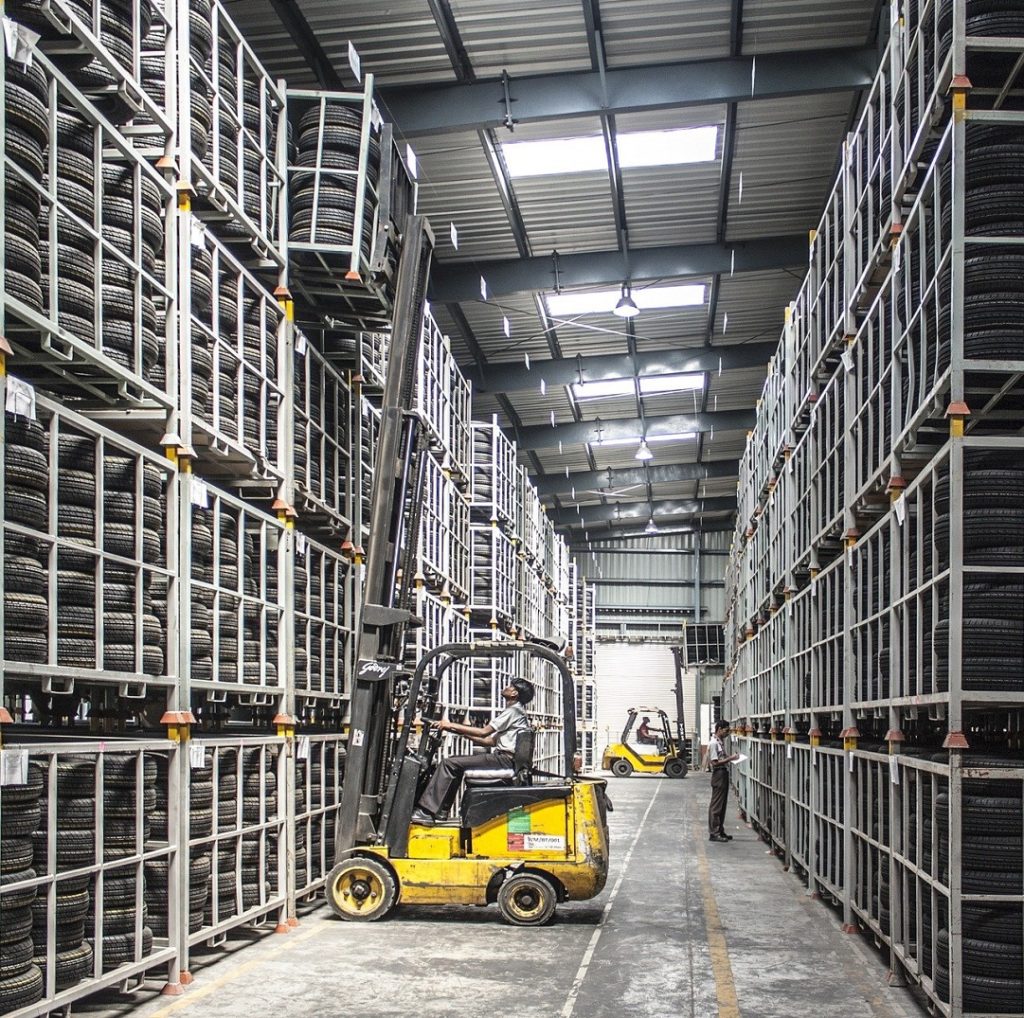
Ergonomics vs. Cost: How To Evaluate Your Material Handling Safety Needs
To determine what equipment you need to maximize material handling safety, answer these questions…
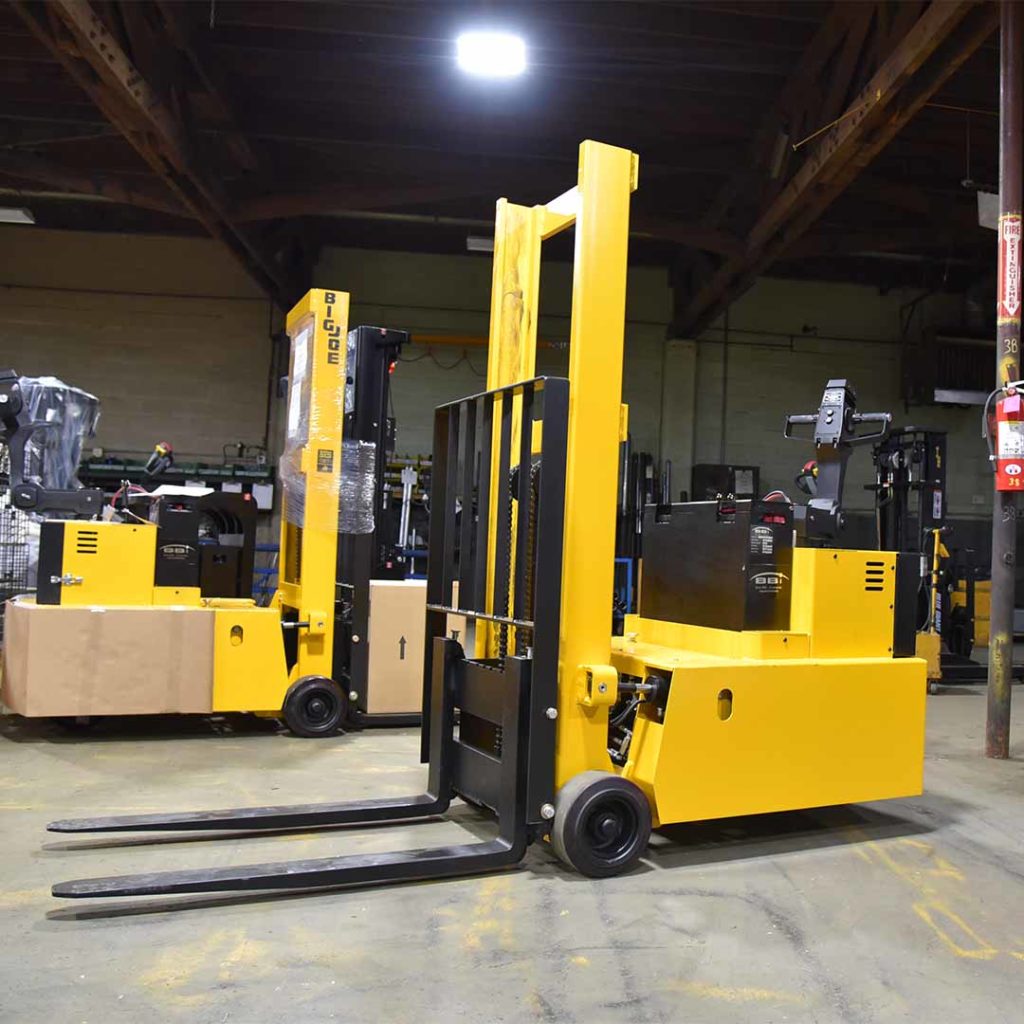
Among Forklift Companies, Big Joe Packs Decades of Expertise. Guess Who Benefits?
Few forklift companies have been in business for 53 years. Now, Big Joe leverages all that experience to help customers grow even stronger…
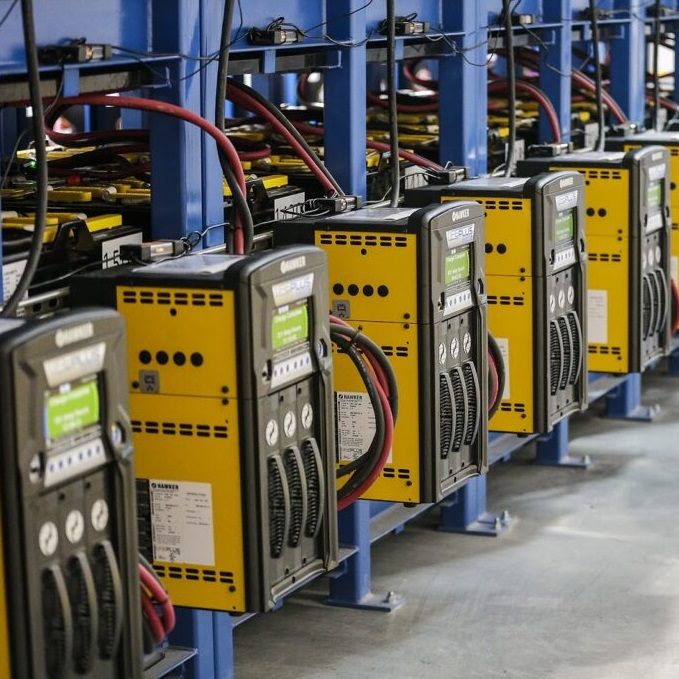
The Facts Are In – And They Favor Electric Forklifts
Should I go electric? We only have to look at the growing share of electric forklifts to see a majority of companies now say, “Yes, you should.”
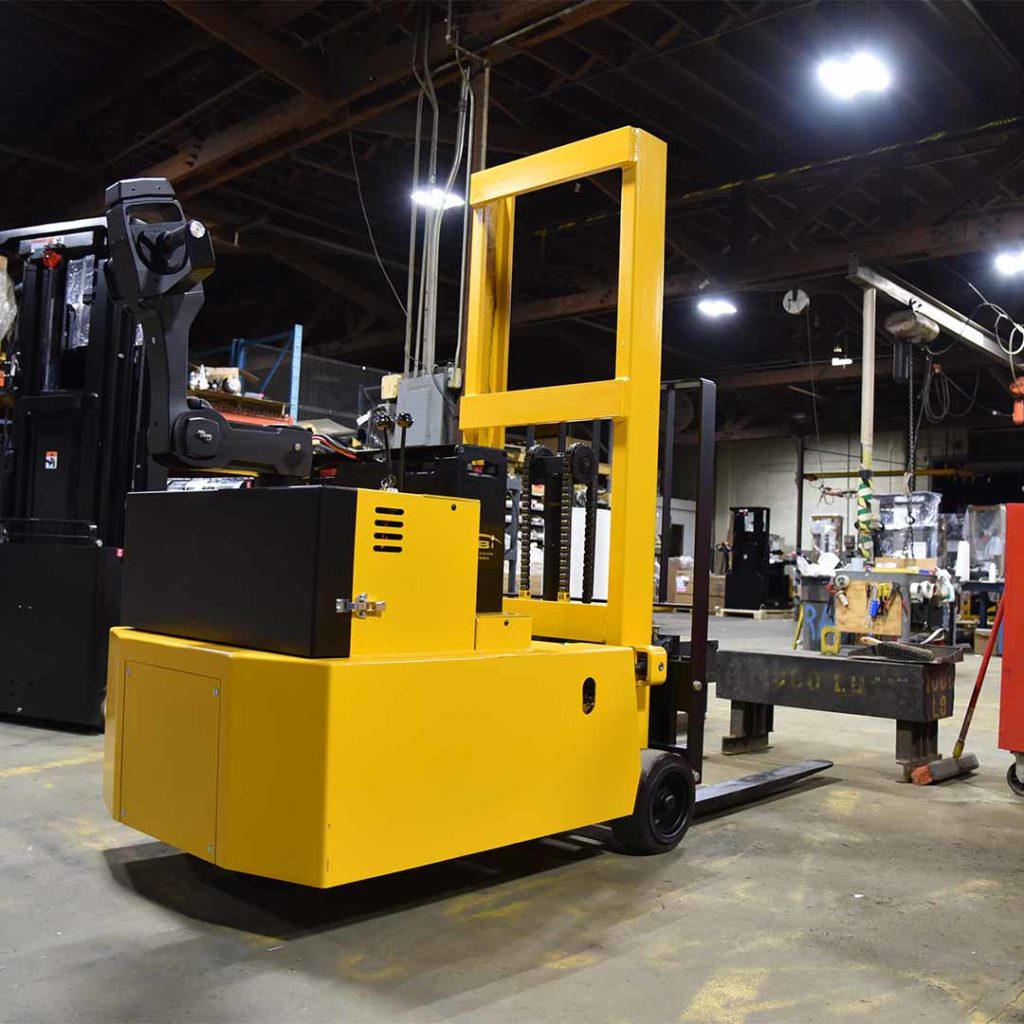
How To Find A Distributor That Offers Great Forklift Prices –
And More
Great forklift prices are just the beginning. Look for these 4 features to find a distributor who can deliver the whole package…

Four Pieces of Material Handling Equipment Every Small
Warehouse Needs
Small warehouses often do not require the same fleets seen in many distribution centers or main production plants. Deploying the right equipment can increase productivity and more…
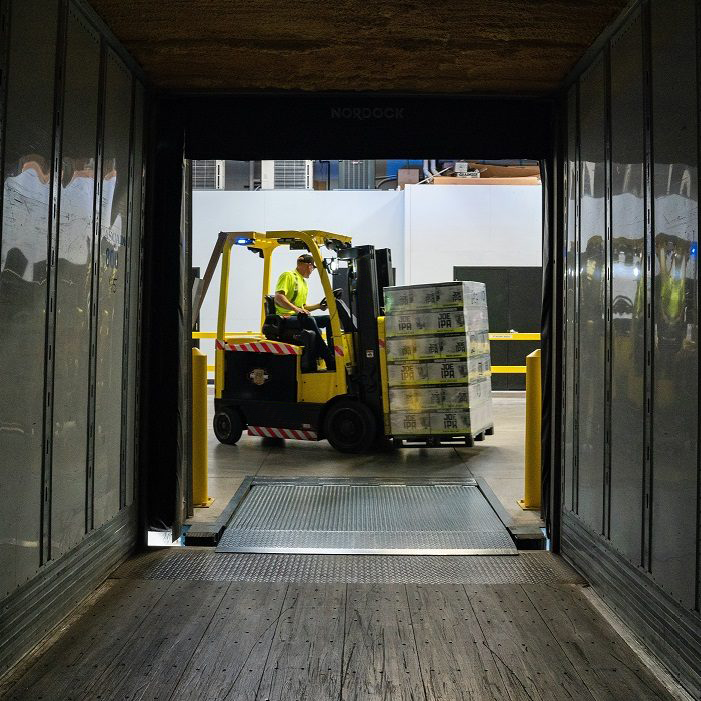
Buying or Leasing Forklifts? A Guide to Making The Right Choice
A large percentage of U.S. businesses lease a portion of their equipment. But the decision of whether to buy or lease forklift equipment is not always as straightforward as it may seem…
